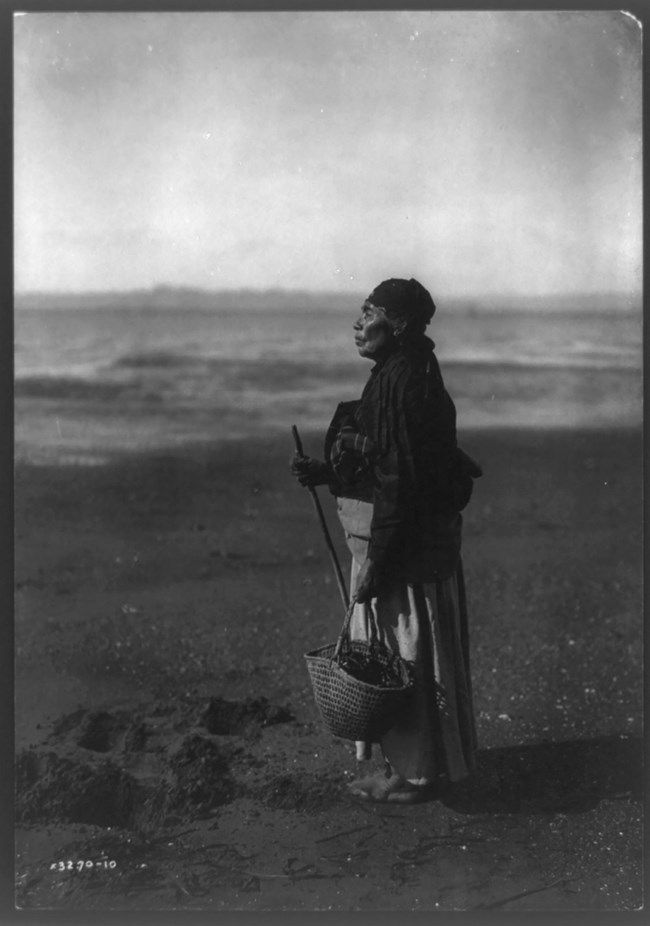Last updated: November 28, 2023
Article
Chinook Clothing

Library of Congress
Chinook clothing is well-suited for the wet winter weather of the Lower Columbia River region. Water-resistant materials like sea otter skins, cedar bark, and beargrass keep the person wearing these clothes dry and warm.
Meriwether Lewis and William Clark’s party admired these beautiful and water-resistant clothes, in part because their own clothes were rotting on their backs in the wet winter weather.
Clark pined for one of the beautiful sea otter coats that he saw people wearing. Clark saw a Nehalem man wearing, “2 butifull Sea orter Skins on as a roabe,” but the man was not interested in selling. When Lewis and Clark wanted to buy luxurious robes made of otter skins from leaders Concomly and Shelathwell, they would only part with them if they received in return Sacagawea’s belt of blue beads. Lewis and Clark agreed to the trade. But did Sacagawea consent to selling her belt? Was it sentimental to her? Lewis and Clark later repaid Sacagawea with a blue cloth coat—but was it enough?
They tried unsuccessfully to hunt sea otter to make their own coats. As Joseph Whitehouse explained, “They are rarely to be caught in traps, & when shot they sink immediately, which makes the procuring of them so difficult.”
After admiring Chinook and Clatsop cedar bark hats and describing the heavy trade in the Lower Columbia for these items, Lewis and Clark purchased some. They then had a Clatsop woman take their measurements and make custom-fitted versions. They paid for these clothes with razorblades, fishhooks, and other manufactured goods.
Some Chinookan people wore clothes they had traded British sailors for, since European boats arrived frequently at the mouth of the Columbia, and those clothes also were suited for wet, waterborne lifestyles. Clark noted that “maney men have Salors Clothes” and that another man wore a “a Salors Jacket and Pantiloons and made Signs that he got those Clothes from the white people.”
About this article: This article is part of a series called “Pivotal Places: Stories from the Lewis and Clark National Historic Trail.”
